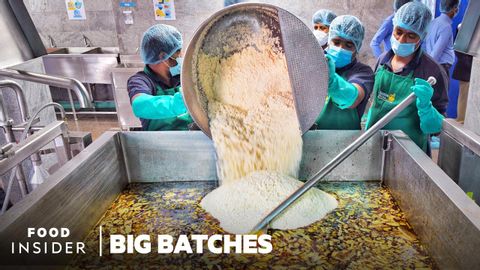世界上最大的免費校餐供應商如何每天為200萬兒童提供食物? (How 2 Million Children Are Fed Daily By The World’s Biggest Free School Meal Provider | Big Batches)
 沒有此條件下的單字
沒有此條件下的單字US /ˈæspɛkt/
・
UK /'æspekt/
- n. (c./u.)方面;觀點;(某物的)要素;特徵
- n. (c./u.)大小;規模;魚鱗;比例;等級;標尺
- v.t./i.測量;攀登;魚鱗
US /ˈævərɪdʒ, ˈævrɪdʒ/
・
UK /'ævərɪdʒ/
- n. (c./u.)平均
- v.t.算出...的平均數
- adj.平均的;一般的,通常的;中等的
US /ˈtɪpɪklɪ/
・
UK /ˈtɪpɪkli/
